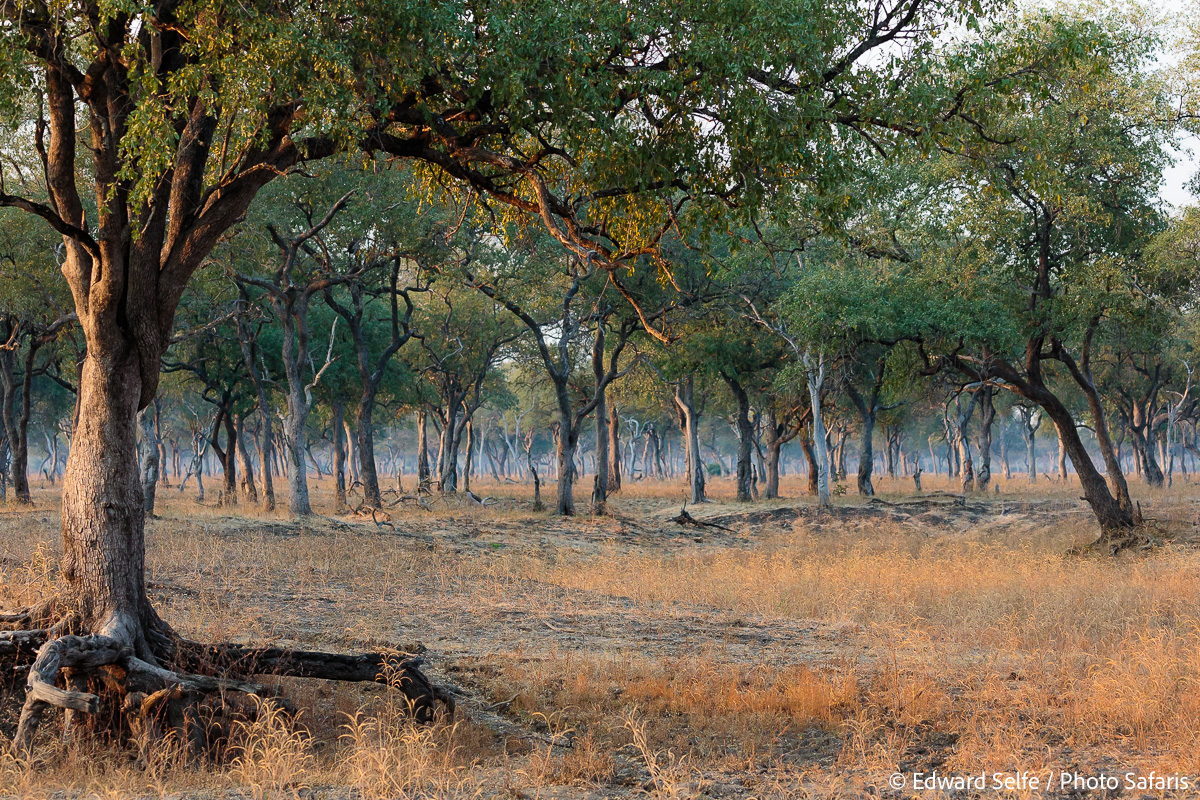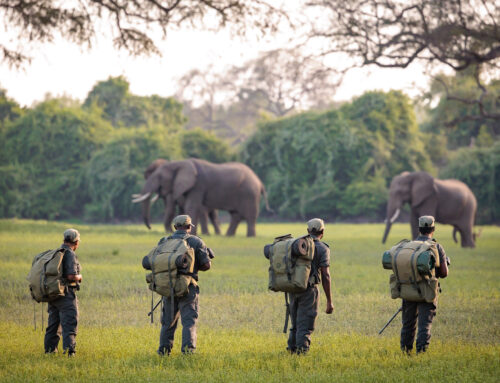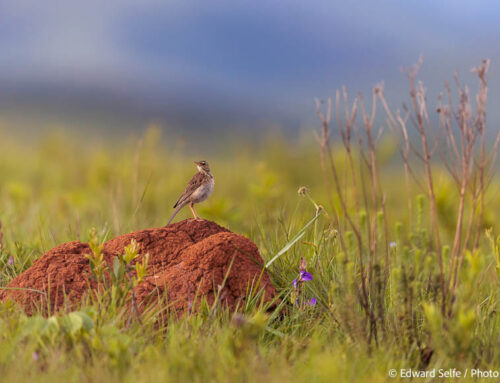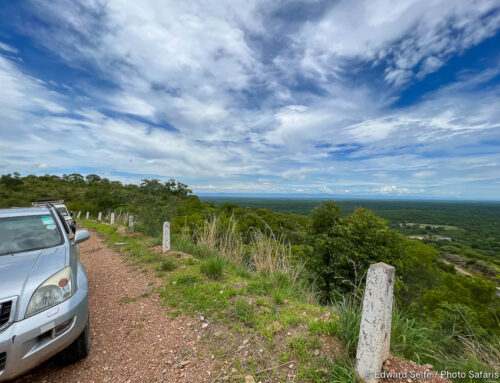The idea that people living alongside prime natural resources should derive some benefit from the conservation of those resources is not new. Norman Carr knew about it in the 1950s when he approached Senior Chief Nsefu in Zambia’s Luangwa Valley and asked him to set aside an area where he could run wildlife safaris. At the time, it was a novelty; the villagers wondered whether foreigners would really travel all the way to Zambia to look at wild animals in their natural environment. And, just to look, and not to shoot.
Of course, Norman was right, as were many others who have since developed the concept of community-based natural resource management. Norman knew that he would have to compensate local people if he asked them not to hunt and forage in traditional tribal lands. At the time, human pressure on the land was minimal and human population density in wildlife areas was low – as one would expect given that crop farming and livestock husbandry do not blend well with large herbivores and apex predators.
However, things have changed dramatically since then, with populations not only growing, but concentrating in areas that did not traditionally support large numbers of people. Compared to prime farming areas, or urban retail and manufacturing zones, wildlife real-estate does not generate large revenues. As populations grow, it therefore becomes increasingly difficult to support people from wildlife tourism income; there are not enough funds to compensate people for not “living off the land”.
Without any other livelihood, this growing population cut trees for firewood, cleared land for agriculture and began to degrade the natural resources at an unsustainable rate. People had lived off the land in the past, but they had done so in much smaller numbers. The story is the same in wildlife areas across the world: as populations have increased, pressure has mounted on natural resources, and wildlife has become isolated in islands of protected areas. Outside these islands, land clearance, poaching and over-fishing have progressed dramatically. In some areas, forests have been clear-felled up to the fences of National Parks; in others, livestock are encroaching into protected areas and coming into conflict with wild predators.
In response to this, governments and the wildlife tourism sector have developed conservation and law-enforcement operations. Through patrols, aerial surveillance, intelligence gathering and modern technology, ‘natural resource police’ have sought to fight back against the surge of resource depletion that is occurring on the margins of all protected areas.
As part of a two-pronged approach, the same stakeholders also turned to education as a way of tackling the problem. If local people can better understand the long-term, sustainable value of the natural resources, perhaps they would choose to protect them. Schools were built, teachers’ salaries were paid, and tourism enterprises rightly displayed their corporate social responsibility credentials. Impressive improvements have been made to school and general education infrastructure; in one safari area, more than a million dollars has gone into building classrooms, libraries, boreholes, science blocks and dormitories.
And yet, poaching and natural resource depletion is on the increase at an unprecedented rate. Zambia is the world’s 3rd most forested country, which is something to be celebrated. Depressingly, Zambia is also experiencing the world’s 3rd fastest rate of deforestation! Primarily this is being driven by demand for charcoal for cooking, but also for building timber and to clear land for agriculture.
For wildlife stocks, this is a disaster. While forests are not the only habitat-type on which wildlife depends, trees are a pretty good indicator of natural resource health. If trees are being cut at a rapid rate, the chances are that animals are being poached, land is being degraded and rivers are being over-fished at the same time. Why have the education and law-enforcement initiatives not slowed the rate of resource depletion?
The answer to this is complex. Starting with the law enforcement response; wildlife areas are usually remote, highly seasonal and under-developed in terms of infrastructure and communications. It is these characteristics that have allowed them to remain wildlife areas, and which attract visitors to enjoy their pristine status. But it makes policing these areas extremely difficult for conservation organisations seeking to control illegal activities. Add to this the fact that demand for animal products is still strong, and law enforcers face an uphill struggle. (Consider the success – or lack of it – that the USA has had preventing drugs crossing their borders from South America.) There is also the consideration that poachers and tree cutters are sometimes breaking the law because their own survival depends upon it; survival will drive people to do whatever they have to do, even if it is against the law.
Education programmes take a long time to have an effect; it is not realistic to think that school infrastructure investment – even when paired with excellent Conservation Clubs – will have a marked effect in less than a generation. It will take until the current students are adults, making educated decisions about where to source materials and how to protect their surroundings, before any effect is noticeable. Added to this, education targets only a small sector of society – children of school age, who can afford to attend. In many of the world’s poorest countries, school may be free, but transportation inadequacies, uniform and equipment costs and other challenges prevent many children from attending.
Moreover, these education programmes for the most part do not reach those who make their livings by harvesting natural resources, which includes the poorest in society. It may be that they would love to attend school, improve their chances of a future that avoids “living off the land” but financial constraints prevent them from even beginning this process. This leaves a large sector of all societies who do not benefit from the education “prong” and are sufficiently poor that they revert to living by gathering timber, bush-meat, elephant ivory or pangolin scales. They are the targets of the law-enforcement efforts that have become well-known in the fight against the trafficking of illegal wildlife products.
Evidently, there is a self-defeating cycle at work here. Top class safari operators generate revenues from international tourism and pay healthy wages to their staff. Local businesses spring up in response to this money and transport links improve to supply the retailers. To run and/or benefit from these improved services, people move in from surrounding areas, increasing the population density in the areas alongside the wildlife zones. Finding that there is not the opportunity and prosperity that they had hoped for, or finding that they do not possess the skills required, they turn to living off the land – farming, fishing or making charcoal. This is an inevitable consequence of the pull-factor of successful business in any country where resources and people can move freely.
However, this natural inward migration effect is sometimes exacerbated by the investment that tourism businesses have made in schools and education. The pull factors are increased many times over by the opportunity of better schools…and jobs in the construction industries that build the schools…and jobs in the transport companies that supply the construction industries that build the schools….and jobs in the secondary service sectors that feed and provide groceries to the suppliers, transporters, builder and workers in these school projects…
What started as a remote wildlife area – unsuitable for a large human population due to conflict with wild animals and lack of infrastructure – has rapidly developed into an area of high natural-resource depletion borne of large population growth. This is in part due to natural population growth and the inevitable attraction of jobs and better services. But it is also in part due to the well-intentioned education and investments efforts by tourism businesses aiming to prevent this very same thing happening. Incidentally, as the population grows, so does the burden on the law-enforcement operations.
It would appear that to protect their own interests, the tourism and conservation sector should actively discourage people from moving into and living on the margins of wildlife areas. And in some policies, they do; for example, some conservation organisations refuse to get involved in conflicts between people and wild animals. They don’t offer compensation, on the basis that people can move to live elsewhere, but animals cannot. However, investors in tourism usually want to avoid such an antagonistic relationship with local people.
One way to remedy this apparently circular problem is to shift the investment that tourism offers to locations geographically further from the wildlife resource which the tourists come to enjoy. If school investment is focussed in a hub beyond the reach of the national park, or wildlife reserve, the migration and population pressure will be eased from the natural resources that are under such pressure. Businesses may say that in this case it’s harder to showcase their CSR work to visitors. This may have an impact on future fundraising for the same.
The other option is to shift the investment to a different kind of community-based benefit. It would be more sustainable if the benefit that they accrued from wildlife resources was not schools, education, infrastructure and transport links, but rather a benefit that was in keeping with the protection of the resources themselves.
Forest-protection through carbon credit schemes offers an option which can work in remote, rural wildlife hotspots. This programme allows internationally-verified businesses to generate carbon credits for every tree that they prevent from being cut down over one year. Protecting trees is a goal in itself; forest is valuable aesthetically, for carbon fixing in the atmosphere and for vital habitat for wildlife. The market for carbon credits is on the increase in the developed world and those credits generated in areas where the protection of trees maintains wildlife habitat are the most marketable of all.
Organisations which run carbon credit schemes allocate the vast majority of the protected forest area to carbon credit generation – in other words, they protect it just as it is. In the remaining portion, they may choose to run a sustainable charcoal operation which provides cooking fuel for the surrounding communities. They may also choose to run a sustainable timber business, returning profits to the communities in the form of water infrastructure or much-needed medical supplies. The key element of this model is that without the maintenance of the forest, the benefits to the communities stop; if there is unlawful encroachment and tree cutting in protected forest areas, the organisations lose the right to generate carbon credits in those areas, and the income ceases. There is a collective responsibility to ensure that benefits continue, and a considerable self-regulating pressure to avoid breaches in the agreement. This will most likely involve restrictions on the numbers of people moving into the forested area, which limits the pressure on the natural environment.
Carbon credits generation is well-developed in some countries – most notably Brazil – and is gaining traction quickly in other areas which desperately need a solution to large-scale deforestation. It has limitations, and there are huge hurdles to overcome at the implementation stage, but it offers a possible solution that protects habitat as its core principle. It will be interesting to see whether these schemes can get established in time to slow the rate of deforestation in Zambia. Carbon credit generations is probably not a complete solution and this article does not intend to provide a solution, but merely a discussion on some of the factors at play.
Wildlife areas exist and persist exactly because they have low human population density. Some wildlife tourism community projects have generated unwanted effects because they invest in infrastructure that attracts more people to the wildlife area immediately around them. Without a conscious effort to break the cycle of investment-led in-migration, tourism businesses may find the very resources that they rely upon being degraded by the people that have been attracted into the area. Alternative methods of ensuring the community benefit from tourism and resource protection include de-centralisation of the investment benefits of tourism, and benefit programmes that are more appropriate to the wildlife area in which their funding is generated. These options need to be considered soon, while there are still large wild areas to protect.




